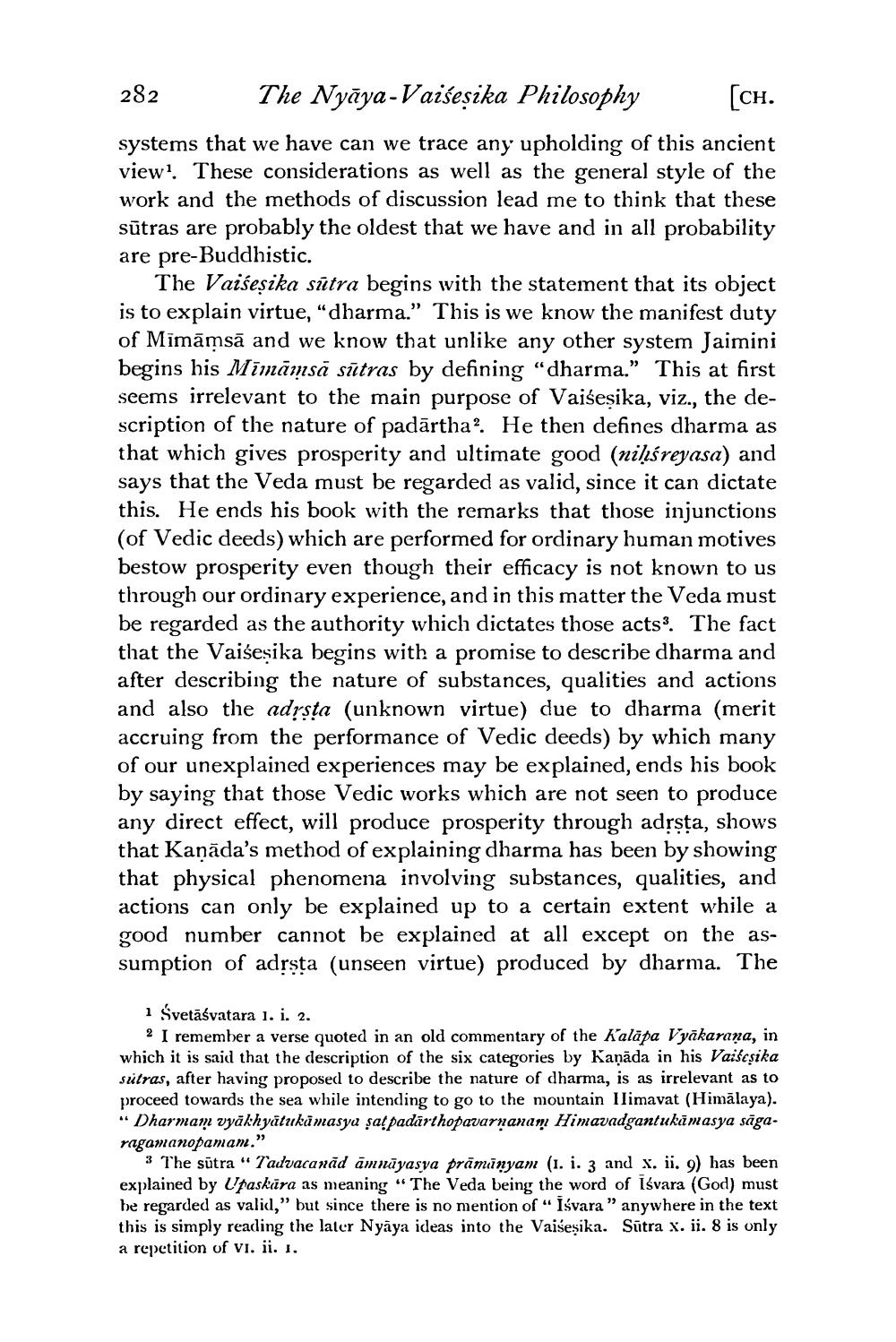________________
282
The Nyaya-Vaiseṣika Philosophy
[CH.
systems that we have can we trace any upholding of this ancient view1. These considerations as well as the general style of the work and the methods of discussion lead me to think that these sūtras are probably the oldest that we have and in all probability are pre-Buddhistic.
The Vaiseṣika sūtra begins with the statement that its object is to explain virtue, "dharma." This is we know the manifest duty of Mimāmsā and we know that unlike any other system Jaimini begins his Mīmāmsā sūtras by defining "dharma." This at first seems irrelevant to the main purpose of Vaiseṣika, viz., the description of the nature of padartha2. He then defines dharma as that which gives prosperity and ultimate good (niḥśreyasa) and says that the Veda must be regarded as valid, since it can dictate this. He ends his book with the remarks that those injunctions (of Vedic deeds) which are performed for ordinary human motives bestow prosperity even though their efficacy is not known to us through our ordinary experience, and in this matter the Veda must be regarded as the authority which dictates those acts3. The fact that the Vaiseṣika begins with a promise to describe dharma and after describing the nature of substances, qualities and actions and also the adṛṣṭa (unknown virtue) due to dharma (merit accruing from the performance of Vedic deeds) by which many of our unexplained experiences may be explained, ends his book by saying that those Vedic works which are not seen to produce any direct effect, will produce prosperity through adṛṣṭa, shows that Kanāda's method of explaining dharma has been by showing that physical phenomena involving substances, qualities, and actions can only be explained up to a certain extent while a good number cannot be explained at all except on the assumption of adṛṣṭa (unseen virtue) produced by dharma. The
1 Svetāśvatara 1. i. 2.
2 I remember a verse quoted in an old commentary of the Kalapa Vyākaraṇa, in which it is said that the description of the six categories by Kaṇāda in his Vaiścşika sutras, after having proposed to describe the nature of dharma, is as irrelevant as to proceed towards the sea while intending to go to the mountain Himavat (Himalaya). "Dharmam vyakhyātukāmasya şat padarthopavarnanam Himavadgantukāmasya sāgaragamanopamam."
39
3 The sūtra "Tadvacanãd amnāyasya prāmānyam (1. i. 3 and x. ii. 9) has been explained by Upaskāra as meaning "The Veda being the word of Isvara (God) must be regarded as valid," but since there is no mention of "Iśvara" anywhere in the text this is simply reading the later Nyaya ideas into the Vaiseṣika. Sutra x. ii. 8 is only a repetition of VI. ii. 1.




